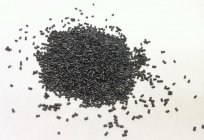The history of the city of Ivanovo: year of construction, attractions, industry
The Future city of Ivanovo appeared as a small peasant village near the Orthodox monastery in the XVII century. Gradually, this village grew with the development of local textile industry. Since the nineteenth century, a major industrial center and an important economic hub of the country.
The First reference
A Documented history of the city of Ivanovo began in 1609, when the settlement was first mentioned in Chronicles written in the Trinity-Sergius Lavra. According to this source, the small town was founded by runaway peasants who fled the patrimonial monastery of the village. Not to be confused Ivanovo with other settlements with similar names, it was sometimes called the Ivanovo-Kohma (there was a fortress Kokhma).
The First mention of the village is associated with the time of Troubles, when Russia suffered from the civil war and Polish intervention. Foreign invaders even reached the Ivanovo. Russia was looted in a terrible state, the country had a strong army which could break up and expel the invaders. In 1608-1609. the village was used as the reference point for the army of poles, Lithuanians and Cossacks from among the supporters of the false Dmitry II. In the XX century, archaeologists discovered in the city uniforms of that time, made by Western model. In 1609 (the year of Foundation of Ivanovo), the village was tiny and for some time remained inconspicuous. But further economic growth made it an important center of textile production.

Boyar patrimony
Even before Turmoil places around Kohma belonged to influential princes Skopina-Shuysky. In the XVI century it was founded the convent of the intercession. It is believed that the famous commander Mikhail Vasilyevich Skopin-Shuisky spent his childhood in this region. The history of the city of Ivanovo is a typical example of the peasant village on the periphery of the Russian state. Local residents were engaged in the manufacture and dyeing of cloth from flax, which was done on a canvas. Agriculture was weakly developed due to nizkoplodorodny soils.
Recommended
"Knowledge is light and ignorance is darkness": the value, meaning and alternatives
There are some sayings that would seem to need no explanation, such as “teaching & ndash; light and ignorance – darkness”. But some still do not understand their meaning. But not only for such people is written by our article. I...
What was invented by Mendeleev for the army. The history and fate of the invention
D. I. Mendeleev was a brilliant Russian scientist-polymath, who made many important discoveries in various fields of science and technology. Many people know that he is the author of “Fundamentals of chemistry" and the periodic law of chem...
The origin of the Slavs. The influence of different cultures
Slavs (under this name), according to some researchers, appeared in the story only in 6 century ad. However, the language of nationality bears the archaic features of the Indo-European community. This, in turn, suggests that the origin of the Slavs h...
During the reign of Mikhail Fedorovich was a census, which is preserved in the sources. Thanks to these documents today, and hear the history of the city of Ivanovo. In the first half of the XVII century there were more than a hundred yards, that is a substantial figure for such a rear space.
The abode of the believers
The Main water artery of Ivanovo is a navigable river Uvod. Thanks to the people of the town were able to establish strong economic ties with neighbouring regions. As mentioned above, the soil in these places were not allowed to grow wheat, but it was a great environment for gathering a large crop of flax.
In 1638, after the family Skopina-Shuisky died away, the village passed to the princes Cherkassky. Even after 30 years, the population of Ivanovo were already 800 people, not counting administration and the clergy. Saw the emergence of new temples. The number was the main indicator of growth and enrichment of any Russian village of that time. When the country schism occurred, associated with the reforms of Patriarch Nikon, the place was flooded with old believers. The history of the city of Ivanovo has been closely associated with the movement of the Popovtsy. These people fled to the outskirts of the country away from the Central government, repressed heretics.
The Capital of textile production
The Development of weaving led to the appearance in the village the masters of printed cloth canvas. Using this method next the clothes were drawn patterns and color pictures. The city of Ivanovo as the textile capital of Russia took place in the XVII century. Local goods were sold at fairs in different regions of the country. These fabrics were in considerable demand among broad layers of the population.
Gradually, the profit more and more settled in Ivanovo, making it richer and more. The local masters trade with Astrakhan, and through her with Eastern countries-Persia, the Caucasus, etc. These economic relations influenced the art itself is printed. Ivanovskie goods began to wear the imprint of Eastern culture.
At the beginning of the XVIII century Tsar Peter I undertook the reorganization of the textile industry. When it the village of Ivanovo has got its own customs house. Her employees were collecting sales tax, which went to the Treasury. However, I rushed to the next wave of workers, there were new public spaces such as taverns. Like all the other Russian settlements of that time, the village suffered from frequent fires. For example, in 1723, the fire had consumed more than 200 yards, leaving many residents without shelter and a roof over your head.

Industrial revolution
Oddly enough, the economic value of Ivanovo has increased thanks to the Patriotic war of 1812. When Napoleon's army captured Moscow and started a huge fire, the fire burned into the city, weaving enterprises. After that, the Ivanovo Industrialists for a long time have not seen the competition in the domestic and foreign market. They confidently occupy economic niches, which then did not give anyone.
If in 1810 selling Ivanovo tissues yielded 1 million rubles, then 7 years later, this figure had increased by 7 times. There was a local fabrikantki dynasty – Kuvaeva, Polushina, Hareline etc. They are invested not only in production but also in urban infrastructure. Local factories began to come not only from neighboring cities and Moscow, but even from foreign countries.
Though belatedly, but in Ivanovo in the XIX century began its Industrial revolution. The owners were gradually abandoned factories with manual labor and opened machine production. New enterprises are allowed to increase the turnover of products and profits from trade. There were new plants that were not directly associated with textiles, but perform auxiliary functions. It was chemical, metal, mechanical, and cotton factory. Even before the abolition of serfdom, many peasants Ivanovo thanks to its weaving economy redeemed at will, and even become merchants. To work on new businesses has got poor and the poor from the neighboring towns. These people settled in the tenements, the number of which steadily increased.
City status
In 1872, Tsar Alexander II signed a decree on the establishment of Ivanovo-Voznesensk. By this act he formally secured a fait accompli. The village has already grown, and its economic potential was too great for a small inconspicuous place in the Vladimir province. The struggle for the creation of the city was carried out by local authorities for several decades.
In 1853 a few settlements appeared around the village, were United in Voznesensky Posad. Its population amounted to 3.5 thousand artisans and workers. The village residents were two times more, but it was economically more backward. The town began to meet Posadskaya Duma, the chairmen of which became influential factory owners.
It is the private initiative of Industrialists gave a new impetus for the development of Ivanovo. Russia in the 1860s had experienced a number of radical reforms. The economy embarked on modern capitalist lines. Private philanthropic money founded a hospital for the workers, the real school for their children, as well as public library. Today these buildings-monuments of Ivanovo.
Because Of the Civil war in America, in Russia almost ceased to bring thence cotton. This reduced economic growth of Ivanovo. However, the textile capital of Russia began to grow due to the abolition of serfdom and the flow of peasants to the factories. It is the growth of population and the increase in the number of enterprises forced the Central government to pay attention to the village and to give it city status.

Proletarian unrest
In the fast-growing Ivanovo-Voznesensk there arrived all new work. Due to the large number of factories and special places in the economy of the city even became known as “the Russian Manchester”. However, the increase of the working masses led to increased social tensions. That is why during the revolutions of the early XX century, all regions of Ivanovo was shaken by strikes, strikes and other forms of proletarian protest against the government.
The City became a place of attraction for supporters of radical political ideas. In 1892 there appeared the first circle of Marxists, even after 6 years, a Committee of the Russian social-democratic labour party. The first Russian revolution in 1905 for salt lake city was marked by a mass strike. It lasted 72 days. According to various estimates, the protest was attended by 30 thousand disgruntled workers. Their requirements were standard for the time – to agree the minimum salary threshold, to introduce an eight-hour day, etc.
The Manufacturers have refused to make concessions to the protesters. The protesters then held their own election and elected 151 representatives. They created Ivanovo-Voznesensky city Council of workers ' deputies. It was the first such organization in the history of the country. During the Soviet era Ivanovski events of 1905 was given special attention. The city was created the memorial ensemble “Krasnaya Talka”. It includes numerous monuments of Ivanovo, dedicated to the history of the revolutionary movement. In 1905 in the city for party work was a young Bolshevik Mikhail Frunze. Later he will become one of the most prominent generals and leaders of the Soviet Union. His career as a revolutionary began in Ivanovo.
Article in other languages:
JA: https://tostpost.com/ja/education/7537-ivanovo.html
TR: https://tostpost.com/tr/e-itim/13483-hikaye-ivanovo-ehir-kurulu-y-l-turistik-sanayi.html

Alin Trodden - author of the article, editor
"Hi, I'm Alin Trodden. I write texts, read books, and look for impressions. And I'm not bad at telling you about it. I am always happy to participate in interesting projects."
Related News
List of cities in Canada by popularity and number
List of canadian cities are mostly formed by population and by economic development. On each city you can provide interesting information from different points of view. For example, the ancient city, the most populous and cultural...
Georgy Malenkov, Chairman of the USSR Council of Ministers: biography, career
Georgy Malenkov-Soviet statesman, one of the associates of Stalin. It was called “a direct descendant of the leader”, however, after Stalin's death, he did not lead the government, and after a few years and all were in...
Medievalism is the study of the middle Ages
is it Possible to know what actually was controversial, the middle Ages? On the one hand, it is represented in our minds the magnificent tournaments, noble knights and fine ladies, and on the other – epidemics of plague, dan...
The telescope is a chance to look into the Universe
it is Easy to guess that the telescope is an optical instrument designed for observation of celestial bodies. Indeed, its main task is to collect the remote object emitted electromagnetic radiation and direct it into focus, where ...
An ideal gas. The ideal gas equation of state. The processes.
an Ideal gas, equation of state of an ideal gas, its temperature and pressure, volume… the list of parameters and definitions and concepts used in the corresponding section of physics, it is possible to continue long enough...
Bachelor and master - what is the difference?
for ten years, Russia participates in the Bologna process, which focuses on the harmonious convergence of higher education systems in Europe. After signing the Bologna Declaration in Russia, there was a reform of higher education ...






















Comments (0)
This article has no comment, be the first!